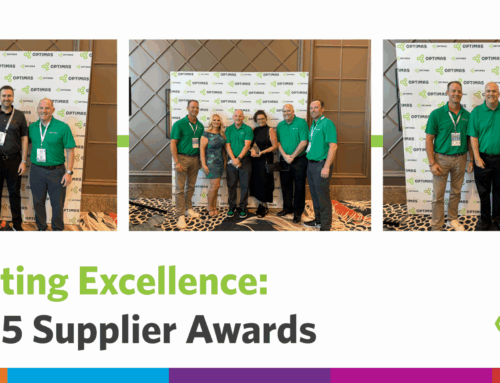
供應鏈管理的 3 個技巧:擴大規模
現在,製造商比以往任何時候都更了解他們的供應鏈。這種意識引發了許多關於如何提高效率和彈性的問題。我作為一名分銷和供應鏈專業人士已經工作了近三十年,因此我了解平衡供應連續性與客戶需求的挑戰。由於 COVID-19 暴露了即使是最安全的供應鏈中的漏洞,供應鏈管理人員也面臨日益複雜的挑戰。了解如何簡化複雜區域並穩定弱點將使您能夠隨著需求的變化快速擴大或縮小規模。以下是一些常青提示 簡化您的零件管理 for a stronger, more resilient supply chain.
簡化零件管理的 3 個技巧
重點:尋找供應鏈具有可見性和安全性的供應商,並擁有管理未來需求所需的技術支持,無論疫情如何。
1. 尋找標準零件的單一來源
選擇單一來源的標準零件是降低供應鏈複雜性的堅實第一步。尋找經驗豐富的合作夥伴,可以擴大或縮小規模以滿足您的需求,最好是與多個地區管理嚴密的合作夥伴合作。
2.選擇速度和輔助功能
一旦您整合了您的供應商網絡,請確保留在船上的每個人都有資源(技術、人員和財務穩定性)來滿足您在擴大規模時的產出。您的供應鏈合作夥伴應該高度可靠、易於接近並專注於您的需求。他們應該能夠兌現為您最常用的部件快速、輕鬆訂購的承諾。無論是面罩還是冰球,相信您的合作夥伴可以交付是最基本的品質。 (是的,我們遇到了冰球的緊急呼叫。它發生了。)這就是合作夥伴所做的。
3.需求實時數據
Along with consolidating your suppliers and vetting them for speed and reliability, ask them how they can support you with real-time visibility into your supply chain. Real-time production and shipment visibility can help you be proactive about gaps or potential disruptions to your supply chain–both critical to scaling up. Knowing where your parts are, what you’re running low on, and what you’re overstocked on will help you streamline your parts management and avoid costly disruptions to your supply chain.
額外提示:尋找財務穩定的供應商
即使是反應最快、以客戶為中心的合作夥伴也可能容易受到外部力量的影響。可悲的是,自從疫情爆發以來,我看到許多供應商倒閉。您最不需要的就是與供應商建立關係,卻在市場急劇左轉時看到他們倒閉。尋找合作夥伴 經證實的財務穩定性 這不僅可以與您一起度過難關,還可以幫助您在困難時繼續前進。
關於重新支持標準零件管理的簡短說明
COVID-19 仍在影響零件管理,製造商對回流、區域化或在其供應鏈中使用“中國+1”模式的興趣日益濃厚。
As a matter of fact, Optimas recently opened a new distribution center in St. Louis to support manufacturing customers who need reliable, fast delivery of standard parts. This strategic location, in the middle of the country, along with a robust supply chain and vendor portfolio, has proven invaluable to customers. It has allowed them to scale with customer demand, improve cash flow, and minimize risks in a time when their competitors are struggling with lockdowns in Europe and delays from China.
讓您的供應鍊為接下來的一切做好準備
如果說 2020 年教會了我一件事,那就是我們的世界已經發生了變化,並將在未來繼續發生變化。即使有了疫苗,各大洲的製造工廠也將繼續遵守更高的安全規程。這意味著對其他消耗品的需求也將持續存在,例如 PPE 和消毒產品。
透過與能夠提供標準零件和服務的合作夥伴合作,您可以進一步簡化您的運營 個人防護設備和 MRO to stay safe and operational. Have a look at what Optimas is doing with all three of these consumables at us.optimas.com.






